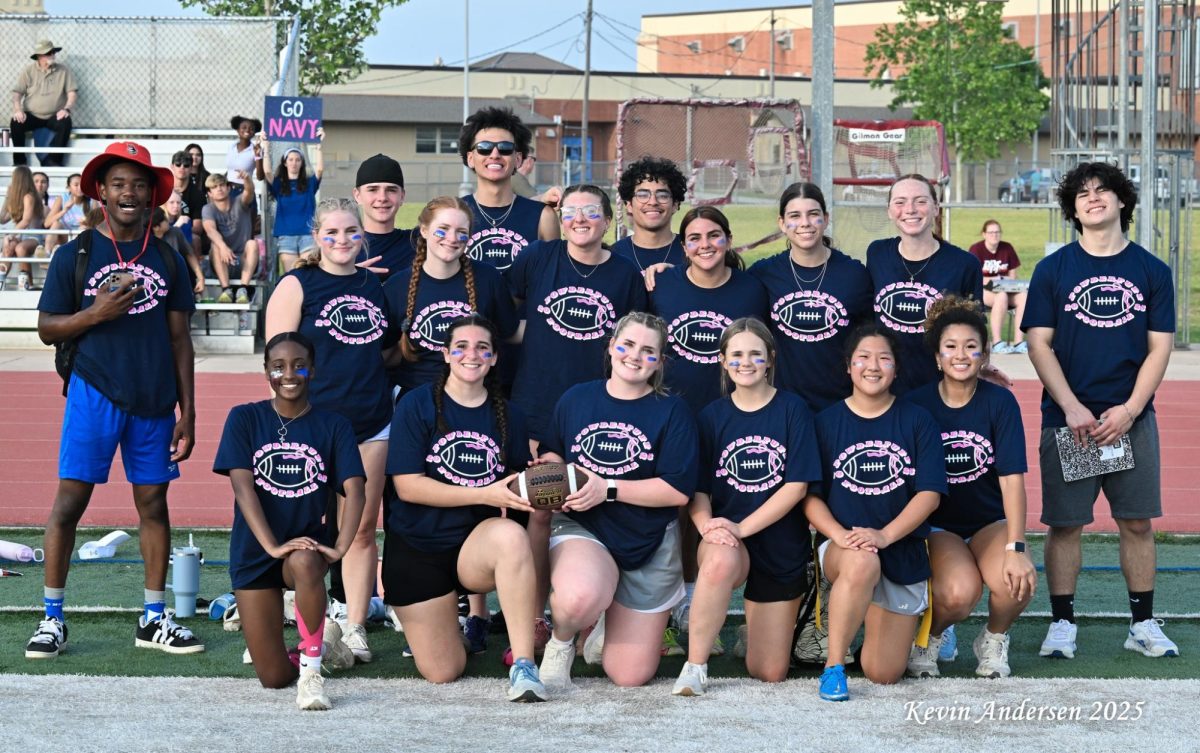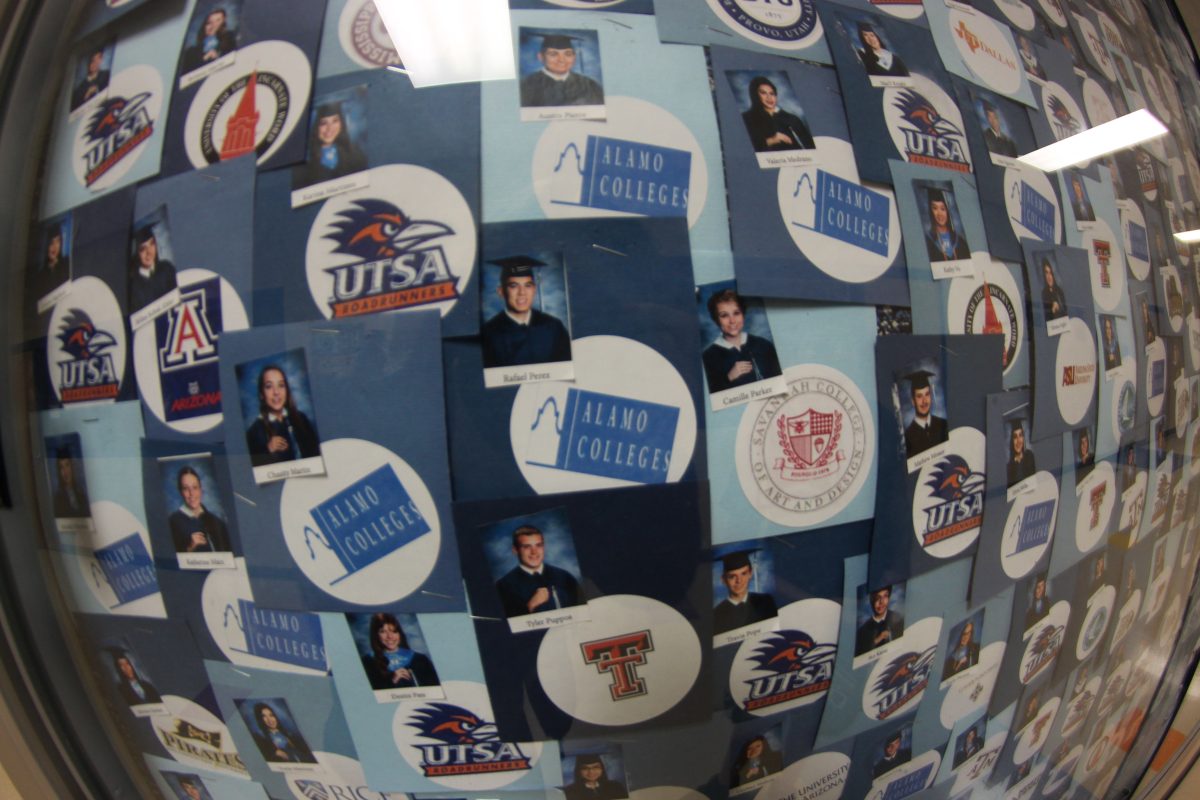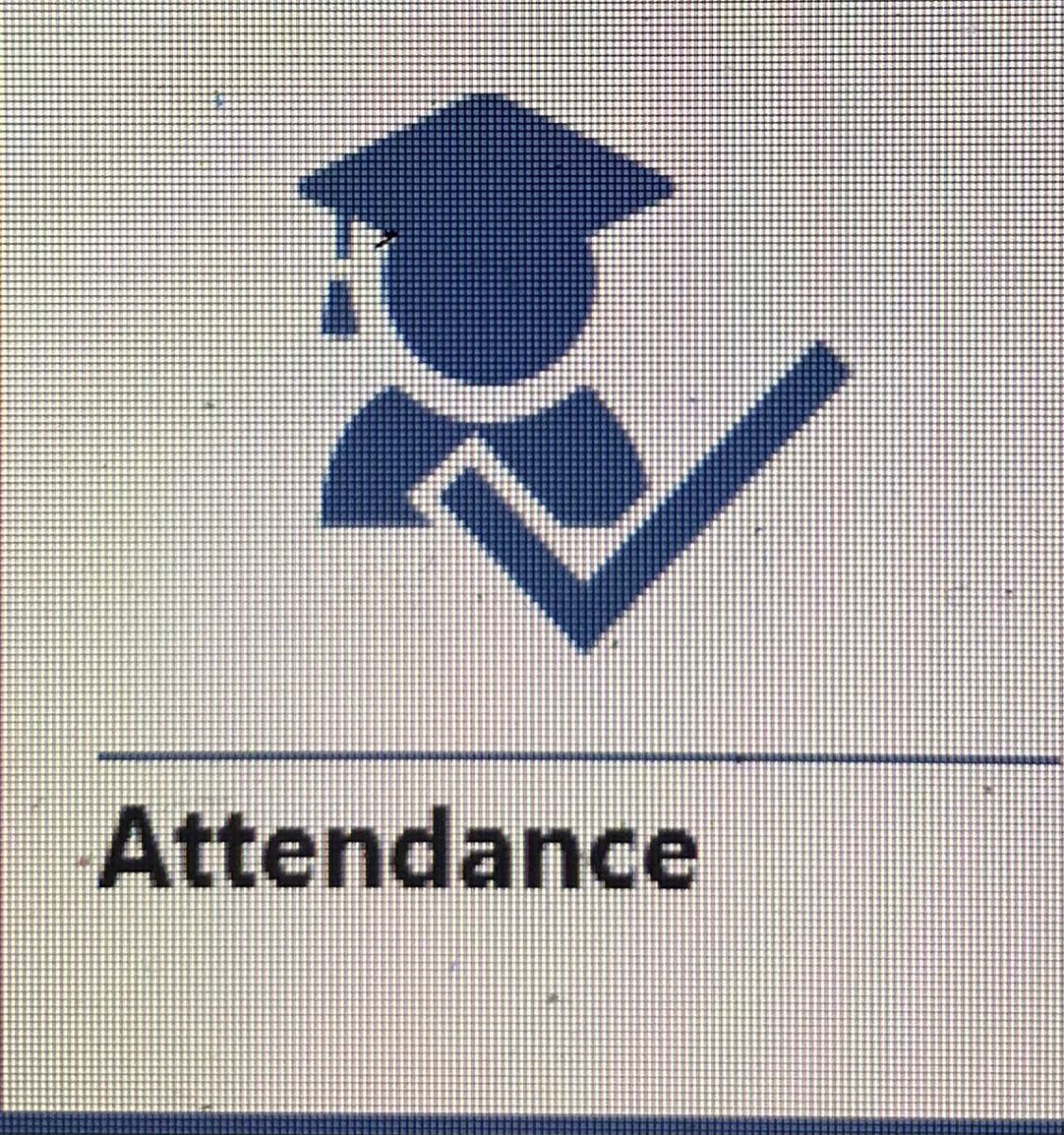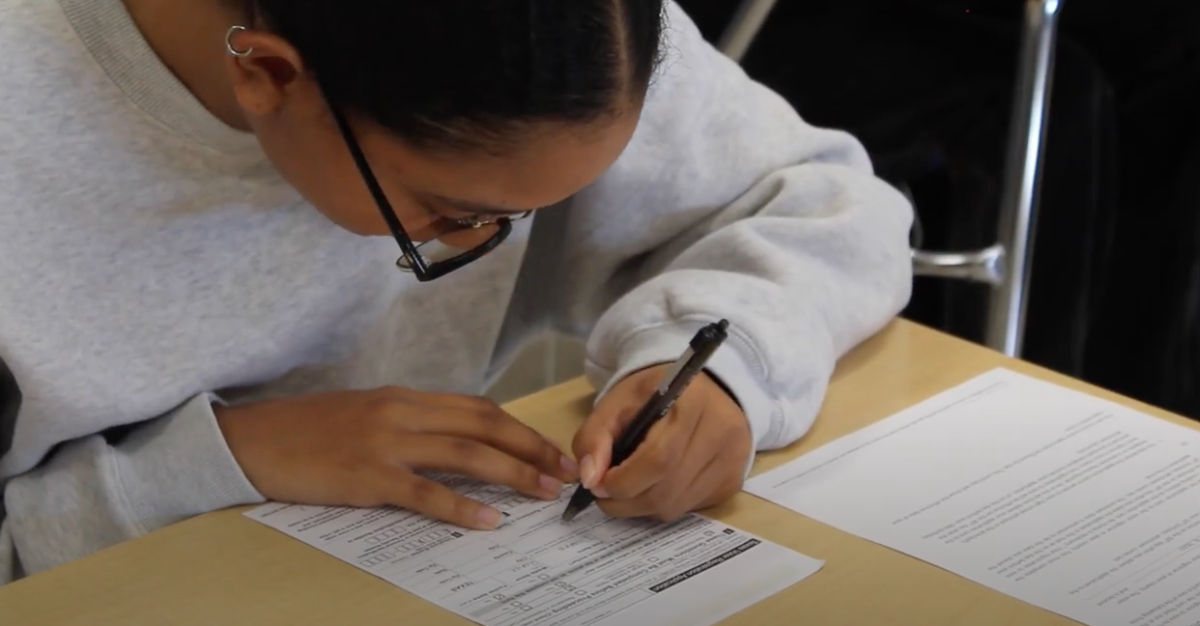by Emma Fitzhugh & Audrey Payne | editors
With the countdown to graduation on, it’s almost time to recognize the students who are summa, magna, and cum laude graduates. However, in the midst of all of these students lies the individual who has the highest rank out of the graduating class.
According to NEISD board policy E.I.C. (Local), the student who is the highest ranking graduate is not individually recognized. Instead, this student is identified solely based on their weighted grade average, or WGA.
“NEISD no longer recognizes the designation of ‘valedictorian’ in our graduation ceremonies. ‘The position or rank of a graduating class is reported as Student ___ is ranked number (__) out of (__) students in the graduating class,’ [according to] NEISD Board Policy EIC (Local),” Senior Director of Curriculum Compliance Garry Hardcastle said.
While this policy does address how honor graduates will be recognized as either summa cum laude (WGA of 100+), magna cum laude (WGA of 95-99), or cum laude (WGA of 90-94), there is not a policy that addresses whether or not valedictorians are recognized at the annual graduation ceremony.
“The student who is ranked number one in his/her class is considered to be the highest ranked student for that graduating class. This position is for one student only; therefore, there cannot be two students tied for this one position. This mathematical calculation is carried to five decimal places which eliminates the likelihood of any ties,” Hardcastle said.
While there cannot be any ties for valedictorian, according to Shannon Grona, Vice President of District 5 in NEISD, the highest ranking graduate has not been recognized at graduation for some time now.
“I have verified with Dr. Gottardy that it is not a school board policy, but it has been our practice for the past thirty years to not recognize valedictorians,” Grona said.
However, the valedictorian may be recognized in other ways despite district policy.
“Some colleges and universities do provide what they call, I don’t know if it’s named a valedictorian scholarship, but basically they provide a scholarship,”

counselor Rebecca Hudkins said. “Sometimes it’s a full ride, sometimes it’s, you know, a significant decrease in their fees, their tuition, for students that are considered valedictorian in their class. So some colleges and universities do consider that something important.”
While students with a high SAT/ACT score and/or a high rank may receive additional scholarships, not all universities may consider being valedictorian a significant factor in terms of college admission, according to Hudkins, let alone even seem significant after graduation.
“I don’t know that there are any perks. Sometimes what I’ve heard is that they’ll [former students] go back and they’ll research people and they’ll say, ‘Oh, this person was a valedictorian, but then this is where they are today,’” Hudkins said. “Maybe they’re not as significant or wealthy as people would have expected. So, I’ve heard of those types of situations where people that were the top of their class may be aren’t as productive in the future as they would have thought.”
Despite the fact that NEISD does not identify valedictorians, other districts, including NISD, do chose to recognize their highest ranking graduates.
“At graduation our valedictorian and salutatorian are honored with a medal and the principal or board member hands it to them,” Director of Gifted & Talented Programs and Advanced Academics at NISD Courtney Mayer said. “The requirements are that you are number 1 and number 2 in your class.”
In fact, according to the TEA (Texas Education Agency) website, school districts, rather than individual high schools, can decide whether valedictorians should, in fact, be acknowledged.

“So these are the TEA standards that we are obligated to follow. It just says, ‘School districts set their own policy to determine class rank. It’s a local decision and not each school district will have the same policy on how to determine class rank.’ It doesn’t say anything necessarily about the valedictorian,” Tarbox said. “So that would almost lead me to believe that it’s probably a district decision. It doesn’t sound like there’s a state requirement anywhere on the valedictorian.”
However, in some cases, it may depend on how many high schools are included within the individual district, according to Hudkins.
“I know a lot of times, smaller schools, smaller areas- they do recognize the valedictorian at high schools and things like that, but sometimes it’s only because they only have one high school in their whole district, whereas larger districts that have multiple high schools in there, I don’t necessarily know that a lot of them do acknowledge the valedictorian. So, maybe that has something to do with that,” Hudkins said.
Approximately 12 high schools currently fall within NEISD boundaries, but it seems as though there may be another reason why the district chooses to not recognize these students, according to principal John Mehlbrech.
“Yeah, it’s been quite a while since they’ve done that. Because it got to a point where you run into situations, you get that one one-hundredth of a point separation of a point between [the students’ GPAs]. Who is good enough to judge the valedictorian based on that? Because a lot of grading that we do is subjective, when you think about it. You know, it’s not a clear cut, you got this right, you got this wrong; a lot of it’s interpreted,” Mehlbrech said.
Whether or not grading is subjective, students are given a way to increase their rank by taking advanced courses (Pre-AP, AP, and/or Dual Credit), with each one having a specific multiplier.
“Do I think rank is important? Yes. I mean we could argue how much the points are and so forth, because you have to look at the history of why they [NEISD] did it that way. They wanted to make it significant enough that if you’re gonna take an AP class, you needed a reward for that,” Mehlbrech said. “If you’re gonna take Pre-AP, you know, it’s more challenging, so you should be rewarded. To get more kids in it, to get more kids at that level, that’s why they separated the points.”
As a result of this multiplier, according to Mehlbrech, there has been a recent increase in how many students not only choose to take an AP exam, but successfully pass.
“A lot more kids are taking it [AP courses]; a lot more kids are doing well on the AP exams. The district has been recognized twice now in the last few years of the number of kids taking AP tests, and excelling at them. So it’s a double winner. So we don’t want to do anything to derail that. Even though it’s hard work, it’s justified. So in the end, yeah it’s worked out really really well,” Mehlbrech said.
In fact, returning students have even commented on how taking more rigorous courses in high school benefitted them when they got to college.
“When I get feedback from seniors that go to UT or A&M or Tech or wherever, they come back and say, ‘I can’t believe how many kids,’ now these are kids that are automatically accepted because they’re top 10 from their school, ‘how many of them are struggling compared to what we are when we’re there. It’s easy when I’m sitting in those classes. These other guys- wow.’ And they appreciate what we did with them while they were here,” Mehlbrech said.
At the same time, the more AP classes students take, the more students may have to decide how important rank is to them, and at what expense.
“Again, when you’ve got that kind of GPA, holy mackerel. And it does add extra pressure on you guys because everybody thinks they have to be in that top 10 percent. And there’s some sacrifices along the way. But in life, that’s what it is too. You know, you have to make choices. What you want to do versus what you feel you need to do,” Mehlbrech said.
While there are students who choose to take AP classes simply for the multiplier, for others, some sacrifices may need to be made in order to accommodate these college-level courses, according to Mehlbrech.
“A lot of them take the AP for the points, but a lot of our kids are AP quality. I mean, I think the kids that are in there deserve to be there, but it comes down to how many, and what am I going to sacrifice for it,” Mehlbrech said. “Am I going to quit band? Am I going to quit Orchestra? Am I going to quit theatre? Because I need that extra AP. I need that extra point. Because I’ve got to be in top 10. You know, that kind of thing.”
Mehlbrech went on to say that even though there is pressure to be in the top 10 percent, students shouldn’t focus solely on rank.
“So that’s what I try to encourage here is don’t wrap yourself around the GPA. Don’t wrap yourself around AP. But what they [students] do is they feel they have to, and that’s where you get a lot of the tension between should I or shouldn’t I [take an AP course],” Mehlbrech said.
Even though he ended up being the highest ranking graduate, senior Nishad Karediya explained how it was a combination of taking AP courses, maintaining a high GPA, and earning a high score on the ACT that helped him get into his dream school.
“The main thing is that I got into my dream school, which is Duke University. That is all I really care about right now. I’m thinking about going into biology probably, and finishing my pre-med prerequisites,” Karediya said.
Despite the fact that his own rank has improved over the course of four years, Karadiya believes GPA isn’t necessarily the most important thing to focus on.
“I was seventh (rank) after freshman year and then I jumped up to number one and I’ve stayed number one. I just like, put in work every day; go home- do homework, just do what I need to do,” Karadiya said. “I think rank is somewhat important, but the main thing is like, learning and absorbing the information that is given to you. Honestly, rank is one of the good things about learning everything and studying for your tests, but the main thing is gaining that knowledge.”
Not only that, but there could be other activities students may not want to ‘sacrifice’ in order to focus on their rank.
“Yeah I think some kids do [make sacrifices for rank], but it’s important to balance out your activities, so like, you shouldn’t be giving up extra curricular activities that you love to do just in order to get a good rank. Because extra curricular activities are just as important as a high rank,” Karadiya.
Mehlbrech seems to agree with Karadiya, explaining that even though there is definitely pressure to be in the top 10 percent, students shouldn’t give up something they enjoy doing.
“I wish colleges would get rid of that. Then we wouldn’t have to worry about it. Because it’s a lot of stress and a lot of pressure on that. The expectation to be in the top 10 percent is high. And we self-indulge ourselves in that competition, because we want to be automatically enrolled, and that’s what they’re [students] shooting for,” Mehlbrech said. “It’s a good goal, but I don’t want them to sacrifice what they want to do, and enjoy doing, because high school is the only time that they’re going to be doing all of this stuff.”
Despite the AP courses and the pressure, there are still students who are passionate about what they would like to pursue.
“But, our problem is a good problem to have. We have a lot of bright, hard working kids, and they have a goal, and they have a passion to do better. Which is really really a good thing, while others it’s just let me get through and let’s move on,” Mehlbrech said.
Click here if you want to read the full NEISD Board policy, EIC (Local).














